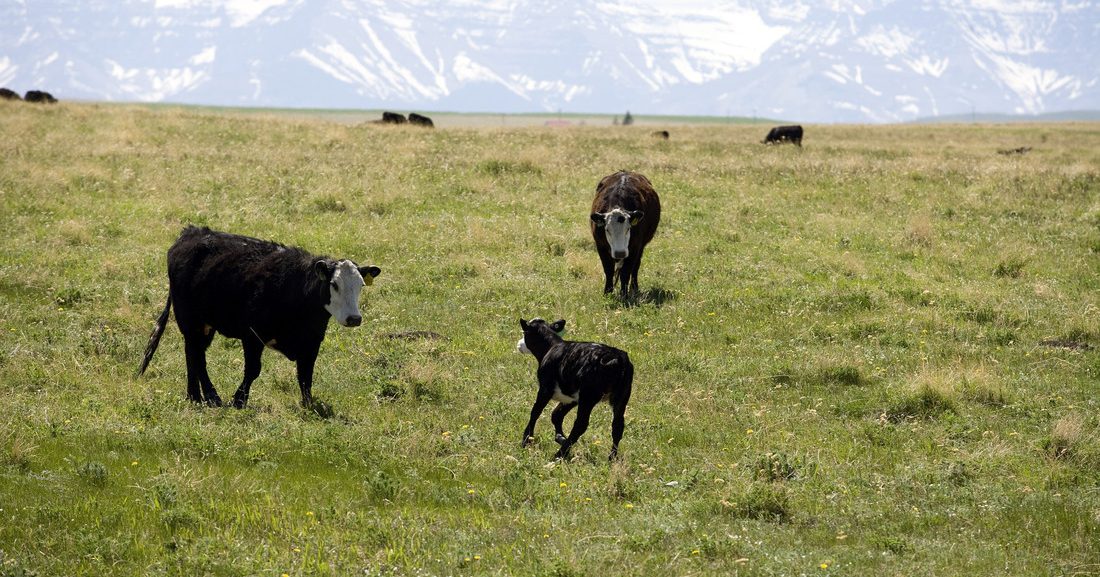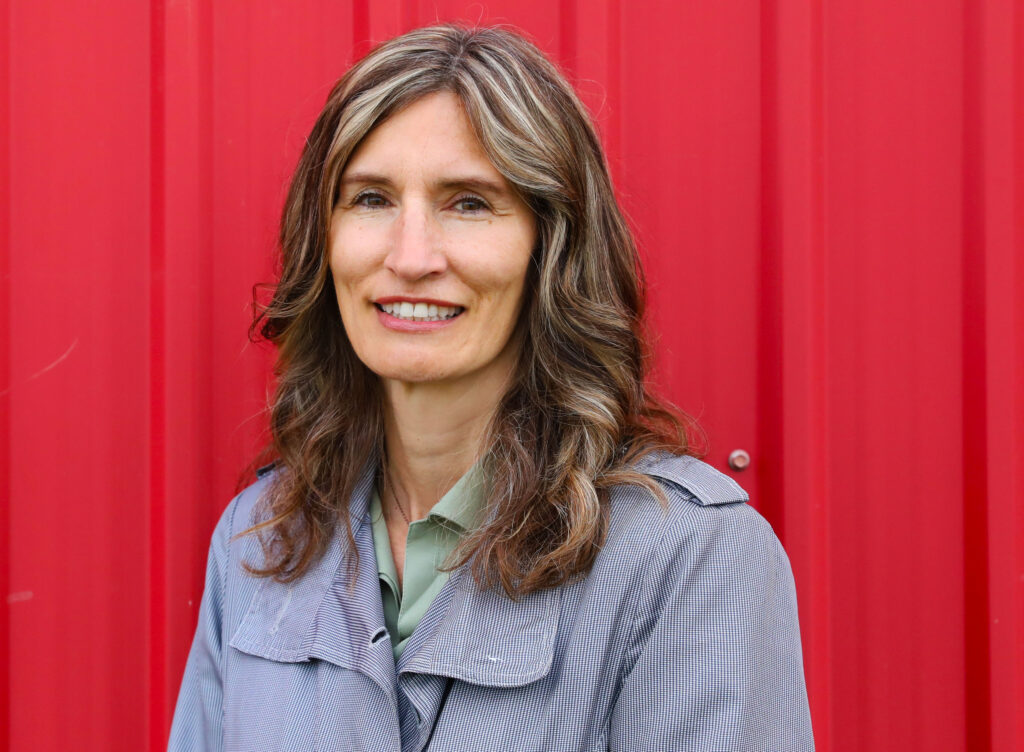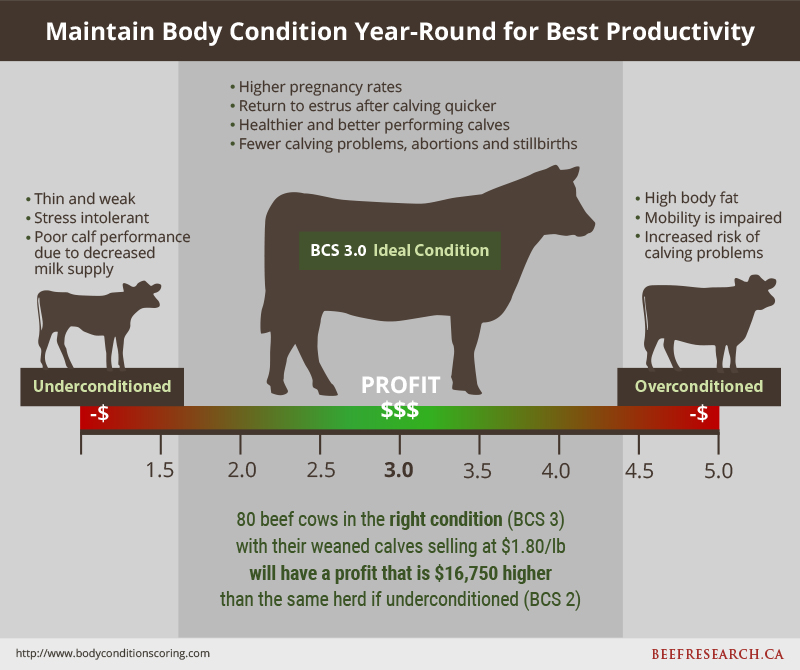AB Direct - Steers
Rail: 492.00-493.50 FOB feedlot (last week)
AB Direct - Heifers
Rail: 492.00-493.50 FOB feedlot (last week)
US Trade- Steers
Rail: 355.00-363.00 (IA, NE) last week
US Trade - Heifers
Rail: 355.00-363.00 (IA, NE) last week
Canadian Dollar
0.19

The value of ‘hands-on’ BCS for a commercial beef herd
The literal act of completing ‘hands-on’ body condition scoring (BCS) is often thought of by commercial beef producers as a procedure done strictly in academic trials, research studies, or by seedstock operations.
Many bypass the practice altogether, choosing instead to rely on experience, assessing their herd’s degree of condition from the feed truck or tractor seat.
Hands-On for an Informed Response
“With BCS, we don’t know what we need to know, unless we get our hands on them,” says Susan Markus, Lakeland College and RDAR (Results Driven Ag Research) livestock research scientist. “Hair coats, shadows, repetition, and time of day are deceptive. It’s not enough to only eyeball them, even if we’re experienced.”

She explains that disregarding scoring can have long lasting consequences such as reduced milk production, smaller calf size, weak suckle reflexes and poor vigor.
More importantly, accurate scoring helps guide feed allocation decisions by delivering usable information and data. With this knowledge, a producer’s highest quality feed resources can be allocated to those needing it most, often the younger, thinner females.
“BCS is about proactive nutrition management, and results must be available early enough to allow a change in plan resulting in the outcome we need,” Markus says. “And that outcome will benefit both calf weights and cow performance. We don’t want surprises with overly skinny cattle at weaning or scramble to buy feed we either can’t find or afford.”
Age Alignment and Practical Strategies
Hands on BCS also needs to fit into normally heavy workloads.
“It’s hard to tell someone to do an extra procedure when they’ve got other ‘priority’ procedures and no extra hands,” Markus admits. “We need to fit it into events like preg checking, plus dedicate an individual to the task.”
She recommends grouping the herd, those aged four and under, a larger middle section up to seven years of age, and the older mature cows. This might be done by literal sort or simply dividing them in record keeping. A representative sample of approximately one third of each age set should be scored to determine overall status.
“If they’re all run together, the younger and older groups will normally be the outliers,” Markus says. “Unless we’re intentionally eyeballing these groups, we won’t see the true picture. The right demographics are critical.”
Touch Points and Timing
Literal scoring can be done successfully by the handler filling the alleyway during events like preg checking or mass vaccinations.
“Touch a representative sample of each age group, feeling the short ribs in front of the hip area, the pelvis hook and pin bones, plus any fat deposits on the sides of the tail head and top of the spine,” she explains. “Use a thumb as it will take some pressure to feel the bones through the fat. Score them on the relationship between fat cover, bone and muscle. It’s easy with some practice and only takes seconds.”
Naomi Paley, Regional Livestock Specialist, Government of Saskatchewan
guides producers through the process of Body Condition Scoring,
in this video from the Beef Cattle Research Council.
Canadian scoring uses a 1 to 5 numbering system with 3 generally considered ideal.
Markus recommends hands on BCS be done twice a year with fall preg checking and post spring calving being most optimal. These time frames both represent feed changes from winter feed to grass and vice versa, plus they allow enough time to make nutrition, diet or management corrections.
Lastly, she emphasizes scoring the cow herd is pointless if producers don’t record the data or use it. Best intentions won’t prevent interpretation changes that occur over weeks and months.
“We always say, ‘memory is fading, but recorded data is right there’. If we document it, it will be available later to help guide our important decisions.”



